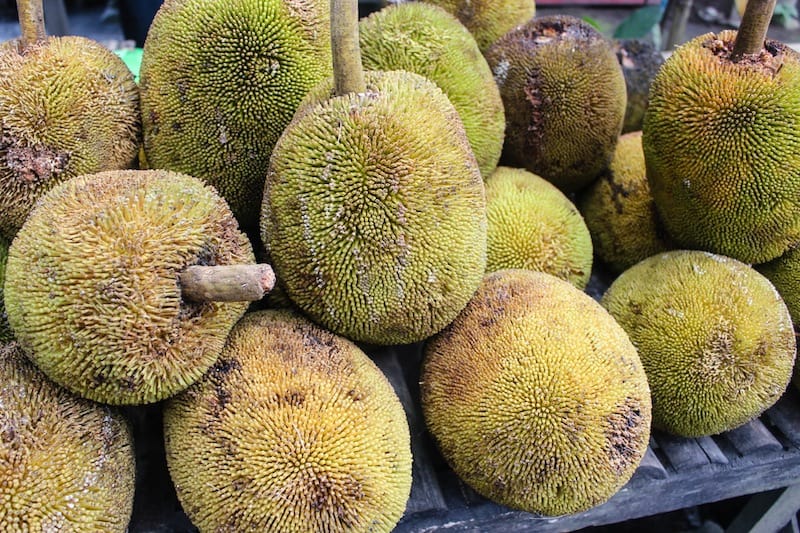Prior to this trip to South Cotabato, I was starting to think that marang didn’t like me. At all.

Three times I had been to Davao City. Three times I bought a whole marang fruit. Three times I failed to have a taste of it. Like most of my romantic relationships, the marang spoiled even before I could dig into the juicy part. I had never tasted it for I would always take the fruit to Manila and wait for it to ripen. It would then sit on the dining table until it rot under my nose.
So I gave up on it, and buried the thought of it gracing my palate in the deepest recesses of my unconscious.
But when Red of Local Governance Support Program for Local Economic Development (LGSP-LED), the organization who graciously took us on a tour around South Cotabato and Sultan Kudarat, proposed to make a brief stop at a fruit stand along Maharlika Highway for a quick affair with this elusive tropical fruit, I was like, “HELL YEAH!”
The marang (Artocarpus odoratissimus) is a fruit tree native to Mindanao and some parts of Palawan and Borneo. Like the durian, it has this weird smell but less pungent. A cousin of the jackfruit, its soft and sweet flesh is wrapped in a thick and thorny exterior. Fruit stands along the roads in South Mindanao are usually packed with marang together with durian, pineapples, and bananas.
Red handed me a barbeque stick and invited me to pick up some of the white, pulpy arils with it. Quite an impossible task. In the end, I had to use my hands in plucking them. It is smooth and somewhat slimy like those of the guyabano. My olfactory powers did not detect any repelling scent. If anything, I actually liked the mild fragrance of it. But what I liked most was the taste. Its sweet, creamy goodness reminded me of a guyabano minus the sour taste and an oversized sugar-apple (atis) minus the grainy texture. To a certain extent, it tasted like overripe bananas.
Louie of Allah Valley Landscape Development Alliance (AVLDA) pointed to the tallest tree on the other side. “That’s a marang tree,” he said. This one was generous, as even from afar I could spot countless fruits dangling from its sturdy branches.
I stared at the tall evergreen tree and took my time to digest two things: the pulpy flesh of the fruit I was munching on and the thought that I had finally got to taste it.
Marang loves me. Marang loves me very much.
Posted: 2013 • 8 • 22